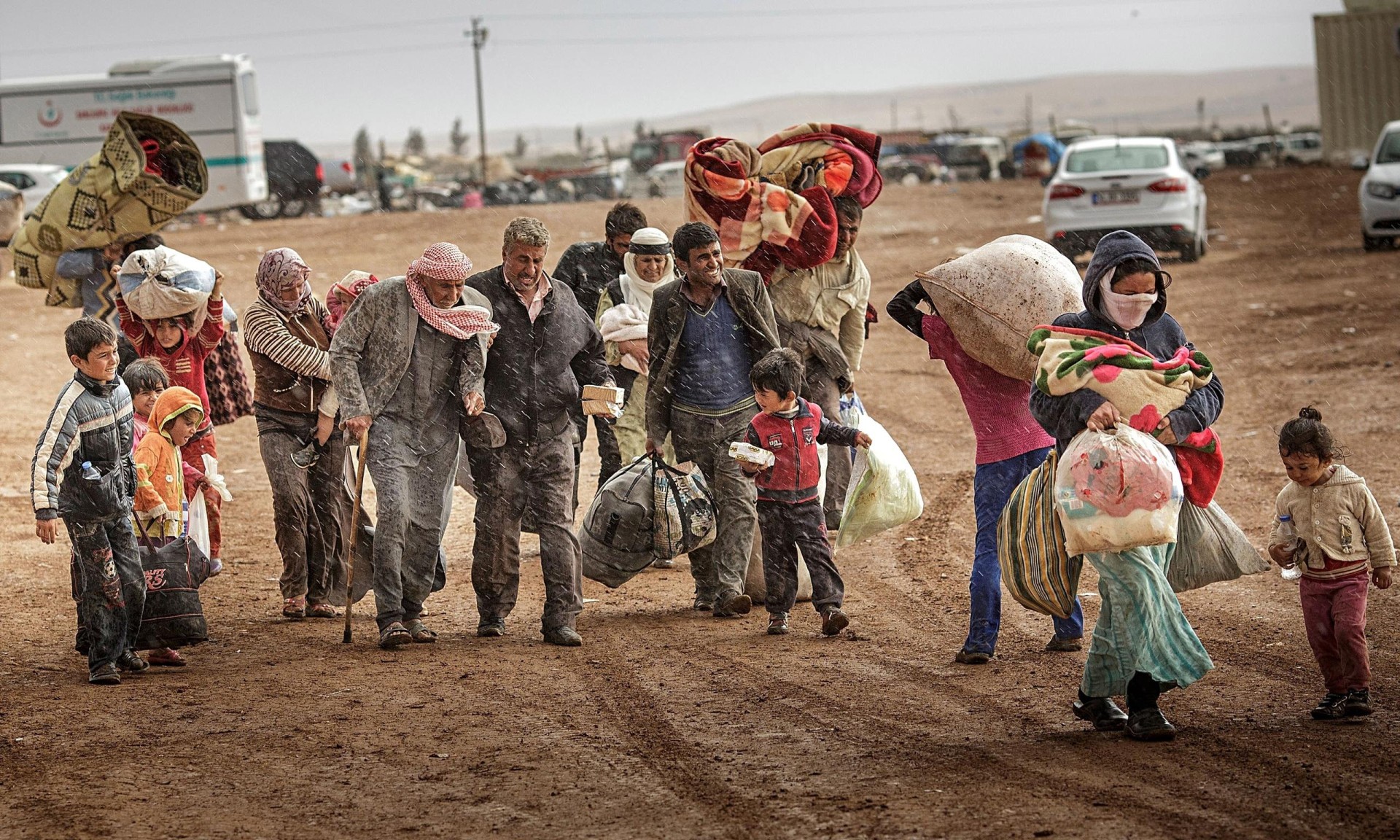Sociocultural approach to PTSD
 The sociocultural approach takes a rather holistic approach to explain mental health, considering social factors (e.g. family), environmental factors, cultural values, and personal experience. They do not look for a singular cause of a disorder, but how an individual's context and experience contribute to mental health.
The sociocultural approach takes a rather holistic approach to explain mental health, considering social factors (e.g. family), environmental factors, cultural values, and personal experience. They do not look for a singular cause of a disorder, but how an individual's context and experience contribute to mental health.
Vulnerability models argue that when risk factors out-number protective factors, an individual is more likely to develop PTSD. Protective factors are conditions or attributes (such as coping strategies) in individuals, families or the larger society that help people deal more effectively with stressful events.
In order to avoid the development of PTSD, one of the most important protective factors appears to be social support. Solomon, Mikulincer & Avitzur (1988) examined the relationship between PTSD symptoms and social support in 262 Israeli soldiers three years after their combat experience. Higher levels of social support were correlated with lower levels of PTSD. Increases in social support were correlated with decreases in PTSD over time.
Similar findings were seen in a study of refugees by Abu-Ras & Abu-Bader (2009). Their research focused on Arab refugees to the USA. Most of the refugees had emigrated to the US to escape war, political persecution or poverty. The study used focus group interviews and took place after the 9/11 attacks – when it was believed that this type of national trauma would revive memories of previous trauma. In addition to suffering from a much higher level of discrimination than other groups, many Arab refugees move to areas of the US where they do not have a support system. This becomes a risk factor for PTSD. The findings showed that immigrants who had a support network were less at risk for PTSD.
ATL: International mindedness
 Abu-Ras & Abu-Bader's (2009) research looked at PTSD in refugee populations. As you can probably imagine there are several risk factors for the mental health of people who have had to flee their own country due to war.
Abu-Ras & Abu-Bader's (2009) research looked at PTSD in refugee populations. As you can probably imagine there are several risk factors for the mental health of people who have had to flee their own country due to war.
What would be the risk factors? And what could the international community do to help provide more protective factors for refugees?
Do some research and see if you can find some good examples of how different countries try to help provide these protective factors.
As part of CAS, you may want to educate your community about the mental health needs of refugees.
The following website may be a good place for students to start: Mental Health and Refugees
The site has three very good videos that explain the issue of mental health in the refugee community and the way that is (and is not) being addressed by the international community.
A limitation of vulnerability models is that the evidence to support the models is often based on case studies, making it difficult to generalize to larger populations. Case studies are unable to isolate variables and cannot account for individual differences. In addition, biological factors are often not considered; it may be biological differences that account for the way that environmental factors influence an individual's mental health.
Coan, Schaefer & Davidson's (2006) research attempts to look at the way that environmental protective factors affect physiology. In their study 16 married women were threatened with an electric shock while holding their husband's hand, the hand of an anonymous male experimenter or no hand at all while they were in an fMRI brain imaging scanner. While in the fMRI the women were shown 12 non-threat indicating images (safety cues) and 12 threatening images (threat cues) - that is, images that when shown, indicated that an electrical shock was possible. The cue triggers sensory arousal and activates brain regions associated with fear and anxiety. Results showed that the brain's "threat response" was lowest when holding their husband's hand and strongest when no hand was held. Not only this, there was a negative correlation between the reported marital quality and the threat response - that is, the higher the reported marital quality, the lower the brain's threat response. It appears that social support is key to resilience to negative environmental stimuli. Although this study is not specifically focused on PTSD, it could lead to potential research on the role of family support in the prevention of the disorder.
Vulnerability models are unable to explain why some people do not develop PTSD when exposed to environmental stressors, but they do potentially help us to prevent the disorder by providing more protective factors for individuals who may be at risk for the disorder.
The vulnerability model also does not explain why social support is able to reduce the chance of developing PTSD. However, there is a clear link between the Vulnerability Model and schema theory. Being exposed to so many risk factors may make an individual feel that the world is unfair, experience fear and anxiety on a regular basis and have a negative attitude about their future. Perhaps having strong social support prevents the development of such schema and thus prevents the onset of the disorder. It is a good example of how social and cognitive factors may interact in the disorder.
The role of Social Identity Theory in PTSD
A study by Loo & Kiang (2003) of Asian American Vietnam war veterans examined the role of Social Identity Theory in explaining PTSD. The researchers carried out a series of interviews with veterans with PTSD and found two key problems related to the veterans' sense of in-group and out-group. First, there was the problem that fighting against the Vietnamese was seen as fighting against "their own people." While fighting against the Vietnamese, they were often reminded of their family and friends from their Asian in-group. Secondly, they felt that they were fighting on the side of their out-group. They listened to negative talk about "Asians" from the troops. Their loyalty was questioned and they often experienced discrimination. In some cases, some were even shot at when mistaken for the enemy.
Another aspect of Social Identity Theory is stigmatization. When veterans return from war, they want to re-assimilate back into their in-group. A longitudinal study of 2490 Vietnam war veterans carried out by the US Center for Disease Control (1988) found that only 49.9% of the same had no symptoms of PTSD fifteen years after the war. Summerfield & Hume (1993) studied a sample of 72 veterans of the Contra war in the 1980s and found that 18% were diagnosable with PTSD. The researchers argue that the difference between their study and the CDC study is the question of how they were received back into their communities. In the CDC study, the veterans were unable to reintegrate into their in-group as a result of rejection from the community. On the other hand, the Nicaraguan veterans were seen as having fought for appropriate social ideals. Although there was still a high rate of PTSD among the veterans, they were more functional in their daily lives than the American veterans.
Social Identity Theory may also play a role in explaining PTSD in rape victims. Kelliezi et al (2009) carried out a study of women in Kosovo who had been raped during the war. The researchers found that PTSD was experienced much more severely when women remained silent after the war for fear of being rejected by their small, rural, conservative communities.
Although Social Identity Theory is used in these studies to explain PTSD, the results seem to also confirm the importance of the in-group as a protective factor in preventing the onset of the disorder. In all three studies outlined above, the individuals felt isolated from their in-group. This lack of social support may have played a key role in the development of their symptoms.
ATL: The limitation of sociocultural approaches
 One of the key strengths of the sociocultural approach is that it looks at mental illness more holistically than the positivistic, reductionist biological approach. However, this is also a limitation in that the variables that affect an individual are difficult to measure and we cannot know how the different factors may interact to cause the disorder.
One of the key strengths of the sociocultural approach is that it looks at mental illness more holistically than the positivistic, reductionist biological approach. However, this is also a limitation in that the variables that affect an individual are difficult to measure and we cannot know how the different factors may interact to cause the disorder.
A good example is a study by Danuza et al (2014) that assessed PTSD in a sample of 150 Albanian veterans of the war in Kosovo 10 years after the conflict had ended. In addition to a diagnostic screening for PTSD using the military version PTSD Checklist (PLC), participants were asked to complete the Social Support Behaviours Scale to determine their level of social support within their communities.
The findings showed that 46% of the sample showed high levels of PTSD symptoms and that there was a negative correlation between the level of social support and the severity of symptoms.
Questions
- What does the correlation found in this study tell us about the link between social support and PTSD?
- To what extent is the theory that social support plays a role in the severity of PTSD a predictive theory?
The original study may be accessed here. In the original study, the researchers note that there were other important variables that potentially played a role in their findings - unemployment and living in poverty due to low wages. Several of the participants were earning under 150 euros per month.
When discussing the question of social support, the correlation raises some questions.
- Could other variables (e.g. socioeconomic status) be interacting with social support to lead to the disorder?
- Could this be a spurious correlation? That is, could this be statistically true but not actually be a factor in the cause of the disorder?
- Correlations of social support and disorder lead to the question of bidirectional ambiguity. Did the veteran lack social support upon his return and therefore develop the disorder - or did he already show signs upon return that led to a breakdown in social support?
Sociocultural theories are often supported by correlational data and do not have a clear argument for cause and effect. For example, how does trauma + social support prevent the physiological symptoms of insomnia or the cognitive flashbacks that people with PTSD experience? Sociocultural theories are highly explanatory, rather than predictive in nature.
Strengths
- Explains differences in both prevalence rates and the manifestation of symptoms across cultures and gender.
- Research takes a holistic approach to the individual and identifies both protective and risk factors - with an emphasis on prevention rather than treatment.
- Studies typically have high ecological validity.
- Several studies are prospective and longitudinal in nature. In addition, researchers often employ triangulation to increase credibility.
Limitations
- Research is correlational in nature - so cause-and-effect relationships cannot be determined.
- The theories are descriptive rather than explanatory in nature. They do not explain the actual origin of the disorder.
- Research does not isolate individual variables that may lead to the disorder.
- There is some disagreement about measuring different constructs such as stress or one's level of social support.
- A lot of research has sampling bias – focused on war veterans and victims of war. Veterans are more easily available for research than other victims of trauma. This may not explain the reason for PTSD in other patients.
- Cross-cultural research is problematic. Etic approaches are criticized for being too ethnocentric. Emic approaches make a comparison of the disorders difficult.
Checking for understanding
According to vulnerability models, when are people most likely to develop PTSD?
According to research by Solomon, Mikulincer & Avitzur (1988) and Abu-Ras & Abu-Bader (2009), what is the most important protective factors in the prevention of PTSD?
Which of the following is an accurate statement of the findings of Coan et al's (2006) study on the role of social support in fear responses?
Coan et al's study was not a study of PTSD per se. However, it does provide some interesting insight into the role of social support on regulating stress, which plays a key role in PTSD.
Which of the following is not a limitation of vulnerability models as an explanation of the origin of PTSD?
Vulnerabilities models are holistic - they focus on a number of factors that may influence an individual's mental health - both postiive (protective factors) and negative (risk factors). They also acknowledge the potential role of biological and cognitive factors in increasing one's risk of the disorder.
According to Summerfield, which group of veterans were at the highest risk of PTSD?

 IB Docs (2) Team
IB Docs (2) Team
